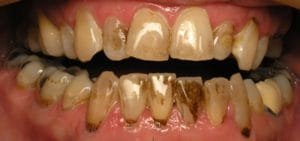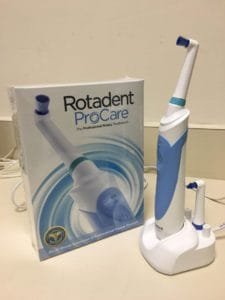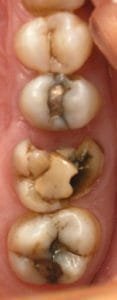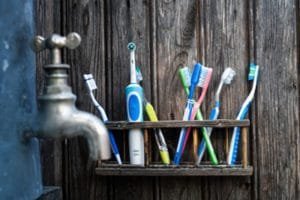Are Muscle Relaxants Helpful in Treating Headaches and Jaw Pain

Facial pain, jaw pain, and headaches altogether impact more than 25% of the population. And some of these may be stemming from the overuse or misuse of the muscles in the head and neck region.
To aid in eliminating the pain in what seems to be muscular pain, some doctors prescribe a “muscle relaxant” such as Flexeril (Cyclobenzaprine). But is that really helpful? Let’s find out.
What Are Muscle Relaxants
Muscle relaxants are a group of medications used to change how muscles work. Doctors use these medications to either treat smooth muscles (e.g. involuntary muscles like our heart) or skeletal muscles (e.g. voluntary muscles like our bicep). We are focusing here on the medications affecting the skeletal muscles. These medications are prescribed in treating muscle spasms, muscle spasticity, and musculoskeletal pain.
Muscle Spasms – Charley Horse
Muscle spasms, commonly called a “charley horse,” are involuntary, sudden contractions or convulsions that can affect one or multiple muscles at a time. When a muscle goes into a spasm, it quickly causes a chemical imbalance within itself setting the “pain” pathway into motion. Spasms of the muscle generate the pain signal that then travel along sensory nerves to the central nervous system (CNS).
Medications such as Soma®, Flexeril®, Metaxall®, Robaxin®, and Norflex® are examples of skeletal muscle relaxants for treating muscle spasms. The “numbing” effect produced by these medications is due to their action on the sensory nerves. They essentially block the transmission of pain signals to the CNS, without altering muscular activity. They simply change the patient’s perception of pain.
Muscle Spasticity – A Neurologic Condition
This condition refers to a muscle (or a group of muscles) starting to contract for no reason. All muscles can contract. But they also need to relax to let opposing muscles do their job. Muscle spasticity can impact our movement and our speech. A spastic leg muscle won’t allow the patient to walk normally since a group of muscles won’t “relax”. A spastic vocal cord can affect our speech for the same reason. The reason for spastic muscles is abnormal neurological activity, meaning a problem with the nerves affecting those muscles. Some conditions that result in muscle spasticity include cerebral palsy, multiple sclerosis, Lou Gehrig’s disease, stroke, and brain or head injuries.
Baclofen (Lioresal®) and Dantrium® are examples of muscle relaxers for the treatment of spastic muscle. These medications are thought to affect the CNS and thus inhibit muscle activity.
Musculoskeletal Pain – A Catchall Phrase
Musculoskeletal pain refers to any pain coming from muscles, bones, joints, and tendons or ligaments. Injuries and overuse are the main reasons for musculoskeletal pain. Both muscle spasms and spasticity result in this type of pain. And the reason why muscle relaxers are used is to “dull” the pain, instead of treating the source of the pain.
Why Muscle Relaxants Don’t Work for Facial Pain
Cyclobenzaprine medications such as Flexeril are intended for the treatment of “acute” trauma or pain due to muscle spasms. Chronic jaw pain, headaches, or facial pain are almost never due to muscle spasms or spasticity. That is why muscle relaxants don’t work for the treatment or management of jaw pain.
TMJ and facial pain are most often due to overuse of the muscles and joints in the head and neck. This overuse results in muscle/joint soreness followed by muscular or joint pain. However, muscle relaxants have not been able to treat the underlying reason behind the muscle and joint pain in the head and neck area.
What is worse is that these medications increase the risk for serotonin toxicity, when used alone or in combination with certain other medications like anti-depressants. Other undesirable side effects include drowsiness, constipation, headaches (how ironic), and dry mouth.
Why Muscle Relaxants Don’t Help with a Tooth Ache or Pain
When we have toothache or tooth pain, it’s because the tooth itself is the source of the disease. A cavity (e.g. tooth decay) can cause very minor discomfort all the way up to swelling, pain, and an infection, depending on its size and other factors. No amount of medications will resolve this problem. And if pain management is the only benefit sought, then the better option is to stick to over-the-counter pain relief medications. Follow this link to learn more about common diseases affecting teeth.
Conclusion – Muscle Relaxants Not Useful for Headaches or Jaw Pain
While muscle relaxants may be useful for short-term use in the management of acute muscle spasms, or for the treatment of muscle spasticity seen in multiple sclerosis, they have not been proven useful in treating chronic (or acute) jaw pain. And since they come with a list of undesirable side effects, it’s best to avoid using them. Plus, they are used for “dulling” the pain. Why not simply take a proven NSAID (like Advil®) or acetaminophen (like Tylenol®) for pain management?
For further information on treatment for headaches and jaw pain, visit our website dedicated to the treatment of head and neck pain.
Our dentist has years of training and experience treating patients with jaw pain and headaches successfully, without medications like muscle relaxants. Are you ready to treat your condition and stop your pain? Contact us now.
 Do we need to brush (or otherwise scrape and clean) our tongue? And the answer is yes. But why? We don’t chew food with our tongue. We cannot get a cavity on our tongue. No matter how much (or how little) we floss it won’t make a difference to our tongue. So why do we need to brush our tongue?
Do we need to brush (or otherwise scrape and clean) our tongue? And the answer is yes. But why? We don’t chew food with our tongue. We cannot get a cavity on our tongue. No matter how much (or how little) we floss it won’t make a difference to our tongue. So why do we need to brush our tongue? Another option is to use a “tongue scraper.” These are made of plastic and allow for simple cleaning of the tongue rather quickly. You fold these like a “U” shape and just run it over the tongue (back to front).
Another option is to use a “tongue scraper.” These are made of plastic and allow for simple cleaning of the tongue rather quickly. You fold these like a “U” shape and just run it over the tongue (back to front).



 What is a Tooth Cavity?
What is a Tooth Cavity? A dental cavity does not form overnight. It develops over several nights, per se. And depending on your pain tolerance, it may cause no discomfort up to severe pain. Some people wonder if cavities are hereditary. And the answer is no. What is hereditary are those genetic codes responsible for tooth, gum, and enamel formation. The main ingredient necessary for a dental cavity to start is plaque. The second most consequential factor is exposure time to plaque. So the next question to ask is what is plaque?
A dental cavity does not form overnight. It develops over several nights, per se. And depending on your pain tolerance, it may cause no discomfort up to severe pain. Some people wonder if cavities are hereditary. And the answer is no. What is hereditary are those genetic codes responsible for tooth, gum, and enamel formation. The main ingredient necessary for a dental cavity to start is plaque. The second most consequential factor is exposure time to plaque. So the next question to ask is what is plaque?
 Also, avoid biting and squeezing your teeth into chewy and sticky candy. These types of sweets are more likely to cause physical damage to the tooth. Instead, let them soften up with your saliva and melt away in your mouth. Afterward, be sure to rinse your mouth out with water, preferably alkaline water. The reason is you want to reverse the damage caused by the acidic environment after eating the sweets. And at the very least, you want to wash off the acidic layer left on the teeth if you don’t have alkaline water.
Also, avoid biting and squeezing your teeth into chewy and sticky candy. These types of sweets are more likely to cause physical damage to the tooth. Instead, let them soften up with your saliva and melt away in your mouth. Afterward, be sure to rinse your mouth out with water, preferably alkaline water. The reason is you want to reverse the damage caused by the acidic environment after eating the sweets. And at the very least, you want to wash off the acidic layer left on the teeth if you don’t have alkaline water. As the saliva washes over and bathes our teeth, it is continually helping re-strengthen the tooth at a chemical level. At the same time, it helps dissolve the plaque on the teeth and wash it off. However, some people don’t have enough saliva and don’t know it. If your mouth is usually dry, you have a higher risk of developing tooth cavity than if your mouth is generally moist. There are many reasons why some people don’t produce enough saliva. Medications, age, genetics are just a few reasons. The best way to combat dry mouth is always to have a bottle of water to sip on. Ideally alkaline water, but at least neutral in pH. There are also some over the counter rinses tailored for people with dry mouth. If necessary, the dentist can also prescribe other medications to help combat dry mouth symptoms.
As the saliva washes over and bathes our teeth, it is continually helping re-strengthen the tooth at a chemical level. At the same time, it helps dissolve the plaque on the teeth and wash it off. However, some people don’t have enough saliva and don’t know it. If your mouth is usually dry, you have a higher risk of developing tooth cavity than if your mouth is generally moist. There are many reasons why some people don’t produce enough saliva. Medications, age, genetics are just a few reasons. The best way to combat dry mouth is always to have a bottle of water to sip on. Ideally alkaline water, but at least neutral in pH. There are also some over the counter rinses tailored for people with dry mouth. If necessary, the dentist can also prescribe other medications to help combat dry mouth symptoms. Symptoms of tooth cavity
Symptoms of tooth cavity Dental phobia is real. According to
Dental phobia is real. According to 
 Let’s face it. We all brush our teeth (hopefully at least twice daily). The ideal way to brush the teeth is using a small circular motion with a soft-bristle toothbrush. The reason being that a hard bristle toothbrush can actually do more harm than good. Even though the enamel is the strongest and toughest part of our body, the gums are not. So even if the toothbrush doesn’t cause any damage to the actual tooth, it can cause recession for the gums (gums pulling away). You know your gums are receding when you look at your teeth and notice they look like they’re getting longer. Also, the neck of the teeth (the part just above the gums) looks more yellow/orange than the top part of the tooth. The reason is that once the gums recede, you are looking at the tooth root. And since the root is made of different materials (not enamel), it looks different and has a different color.
Let’s face it. We all brush our teeth (hopefully at least twice daily). The ideal way to brush the teeth is using a small circular motion with a soft-bristle toothbrush. The reason being that a hard bristle toothbrush can actually do more harm than good. Even though the enamel is the strongest and toughest part of our body, the gums are not. So even if the toothbrush doesn’t cause any damage to the actual tooth, it can cause recession for the gums (gums pulling away). You know your gums are receding when you look at your teeth and notice they look like they’re getting longer. Also, the neck of the teeth (the part just above the gums) looks more yellow/orange than the top part of the tooth. The reason is that once the gums recede, you are looking at the tooth root. And since the root is made of different materials (not enamel), it looks different and has a different color.